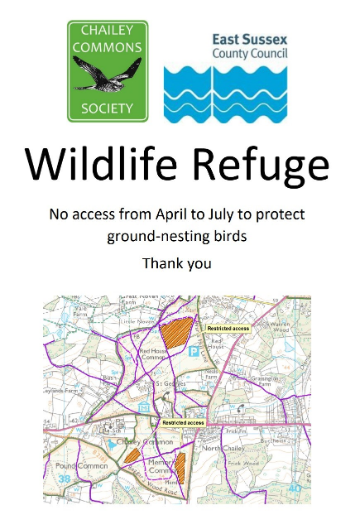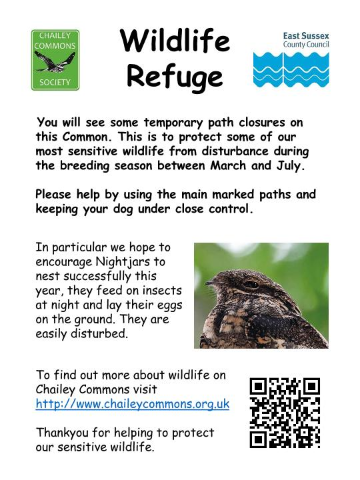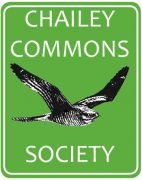Habitat management
Chailey Common Local Nature Reserve is now one of the largest remaining areas of open heathland in Sussex and forms a significant fragment of the lowland heathland remaining in the Low Weald. It was designated a SSSI in 1954 and an LNR in 1966.
The management of Chailey Commons is set out in a Management Plan (last revised by Laurie Jackson MCIEEM in December 2021). This is supported financially by a Stewardship Scheme led by the Countryside management and rights of way unit of ESCC which fund ESCC countryside staff and contractors to restore priority areas each year and to maintain the livestock fencing and cattle grids around the perimeter of the Commons.
The underlying geology of the Tunbridge Wells sands laid down in the Cretaceous some 136 million years ago gives rise to light, free draining, nutrient poor soils which allied with the activities of man, have resulted in the heathland habitat we see today. Heathland is now classified as being of principal importance for the conservation of biological diversity in England.
Historically, it was the demand for fuel, animal-bedding and grazing for livestock that maintained the heathland as a characteristically open habitat, largely dominated by dwarf shrubs such as Heather and Gorse. Often surrounded by Oak and Birch woodland, there are also extensive Bracken stands, flower rich acid grassland and small patches of open or bare ground which provide important refuges for invertebrates such as wasps and bees while the mires, ponds and streams are also valuable habitats particularly the ephemeral ponds that have their own unique assemblages of wildlife too.
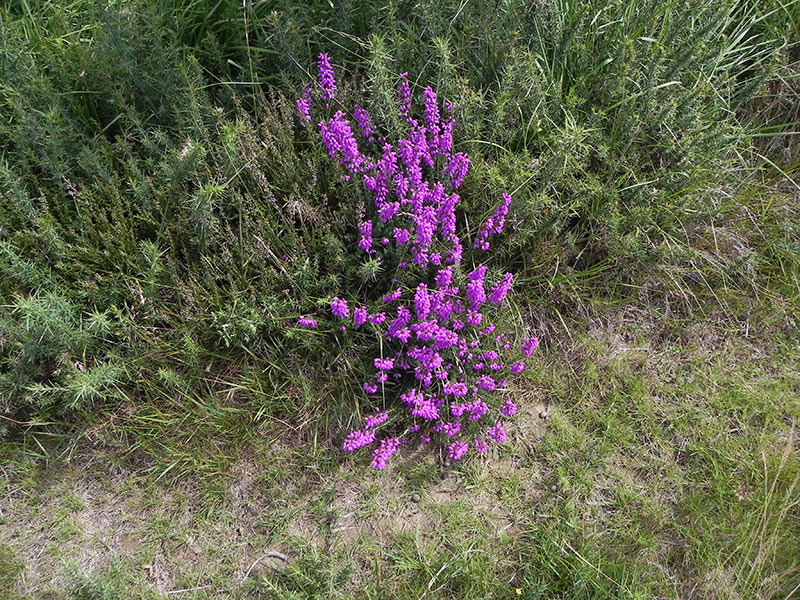
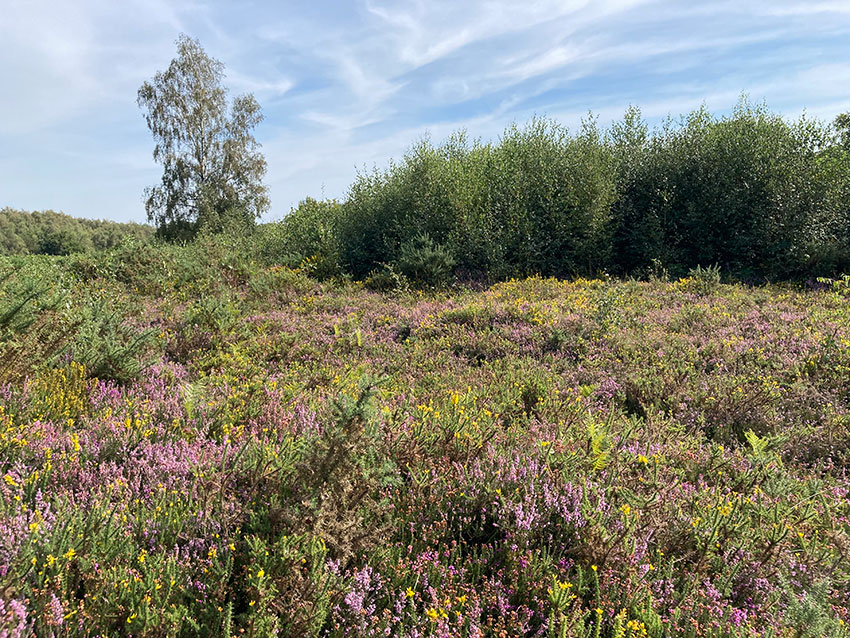
The characteristic flora, fungi and fauna that have developed on these heathlands will only persist if previous management actions can be replicated by today’s farmers, managers and volunteers, hence our principal management strategy is extensive grazing by cattle and ponies. This removes nutrients and keeps paths and heathland open in a natural and patchy way that allows wildlife opportunities to establish and grow. Where the grazing pressure is insufficient to halt or control the establishment of tree seedlings such as Birch and Willow, these will be controlled by hand or by flail and where machinery access is difficult, volunteers from CCS may assist with vegetation clearance. Additionally, where a deep Bracken layer is smothering delicate plants, scraping by machine blade maybe utilised.
Grazing
While grazing was a widespread practice historically, it was only after several years of considerable consultation work that a new Grazing Scheme under the Commons Act 2006 Section 38 was granted in June 2010. Including fencing, it is currently funded through the Countryside Stewardship Scheme.
Both grazing and trampling can help to create a varied structure and uneven aged mosaic in the vegetation along with the creation of bare ground too. However, most importantly, grazing can control scrub and other coarse, vigorous species, particularly Purple Moor grass.
Red House Common is currently grazed all year round by seven Exmoor ponies. These were reared on Exmoor and are on loan from the Moorland Mousie Trust. Four of the ponies arrived at Red House Common in May 2021 and three more were brought over from Exmoor in early August 2024. They are all mares and most carry distinctive brands e.g. an anchor. The ponies are checked daily by a team of pony checkers organised by the Chailey Commons Society. The grazier lets cattle onto the Commons each summer by agreement with ESCC to help keep the bracken, brambles and rank grasses at bay.
Please do not feed the animals. This will encourage loitering rather than foraging and greedy behaviour which could result in kicking. It may harm the animal’s health. Enjoy the ponies from a distance – please do not approach closely.
We do ask that you please keep your dogs under control so they don’t chase or worry the livestock. Please note that the seven Exmoor ponies are often split into two or more groups. Dog fouling can also be an issue as a parasite called Neospora can cause cattle to abort calves, so please do clean up after dogs and don’t allow them into the cattle troughs as this is drinking water for the grazing stock.
While grazing is the most natural way of controlling the vegetation, unfortunately the animals cannot do it all, particularly the Bracken where mechanical help in the form of a flail mower is needed. Bracken produces toxic compounds which can inhibit the growth or germination of other plants around it but even just crushing or rolling it can weaken it and stop it from dominating the heathland.
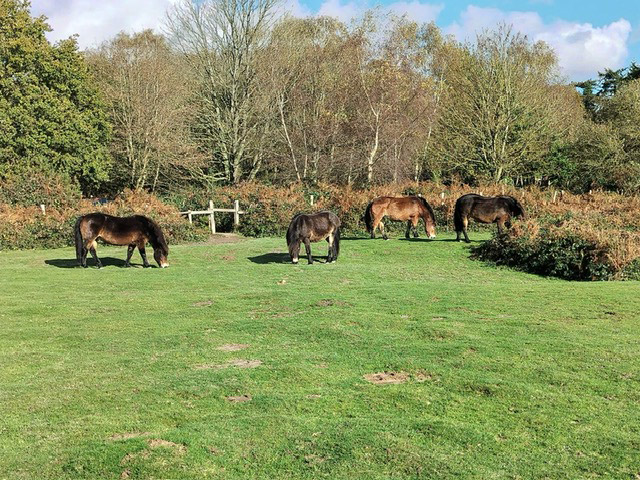

Heathland scrapes
The heathland area in East Sussex has shrunk by 50% over the last 200 years and most of what remains is now within Ashdown Forest. Chailey Common LNR is important for its dry and wet heathland habitats and associated wildlife but encroachment by scrub, particularly Purple Moor Grass, Bracken and Silver Birch are always ongoing issues.
To try to maintain and enhance the quality of our heathland, a number of scrapes have been created over the last few years, mainly on Memorial Common. By removing the top layer of soil which contains the bulk of any Bracken thatch and its rhizomes along with any enriched soil from dog waste, the heather seed retained in the seed bank is then able to regenerate and has successfully done so in several areas.
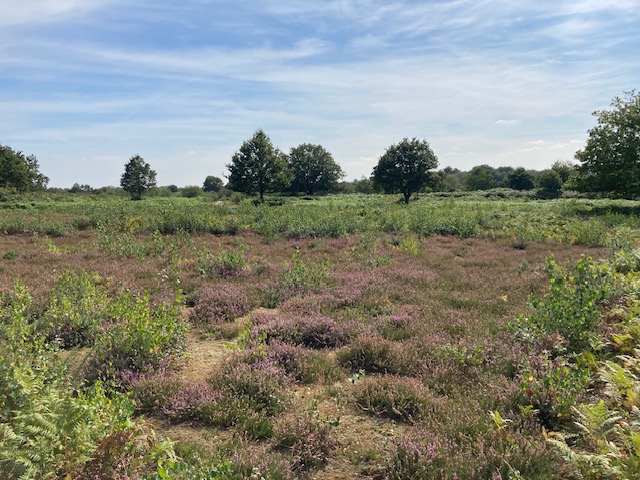
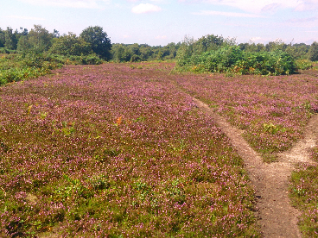
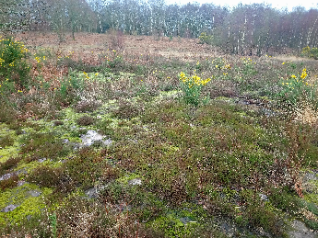
Wildlife refuges
Since 2022, in order to try and provide some level of protection for the Commons wildlife, we have been trialling ‘wildlife refuges’. We initially set up the first one on the north slope of Red House Common in 2022 and have continued with this and a further two refuges on Memorial Common for 2023.
The idea is that by restricting access to these areas from March through to July, it will help provide quiet and undisturbed havens for insects such as the special and rare Tiger Wasp, and Solitary Bee, reptiles such Common Lizards and Adders and a range of ground nesting birds such as the Chiffchaff and Yellowhammer and not least, our famous Nightjars.
The areas have therefore been marked with suggested boundaries of cut birch trees laid along lines through the ground cover and, although there may be a few informal paths restricted during this period, there are no interruptions to any of the marked and signposted public rights of way.
We would really like to thank everyone for their help and cooperation with observing the refuges this year which should ensure that the wildlife is given the space to continue to live and breed where its natural habitat lies.
